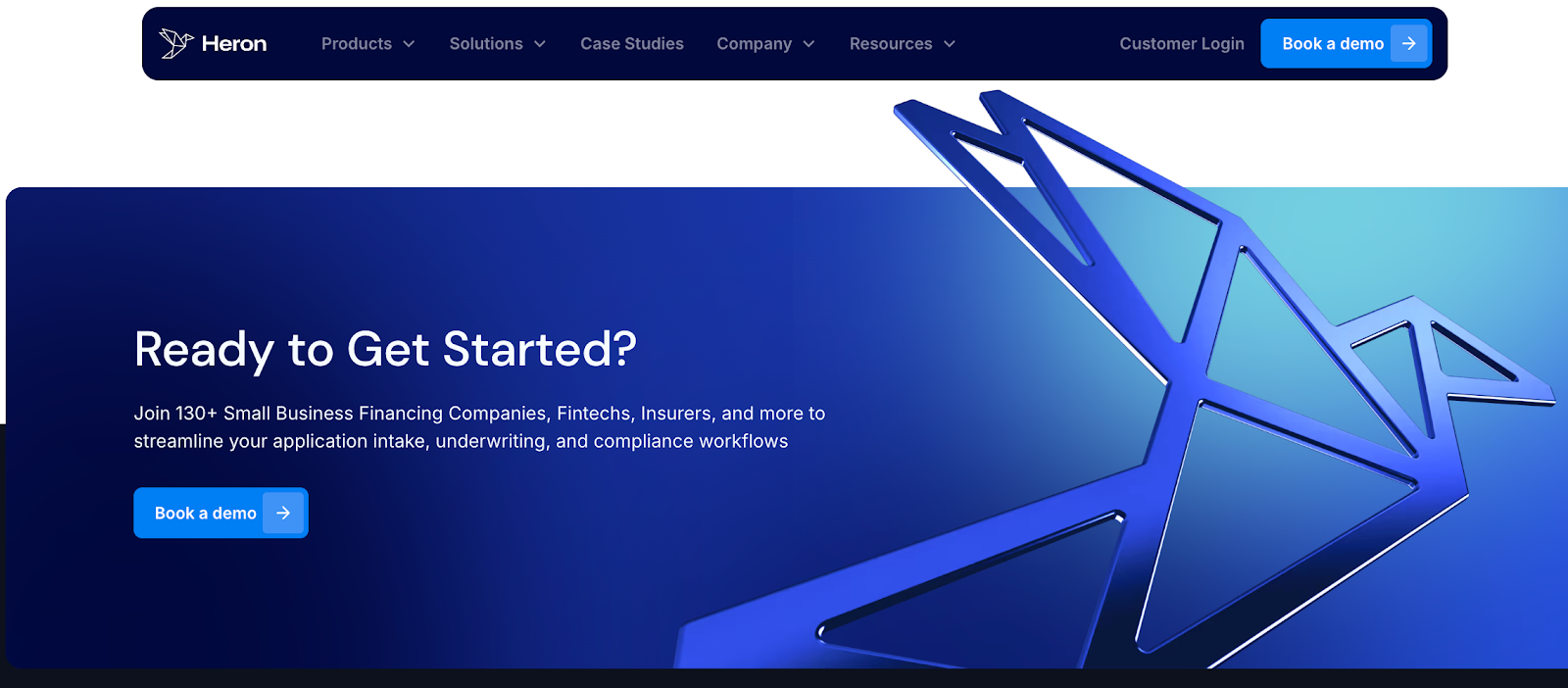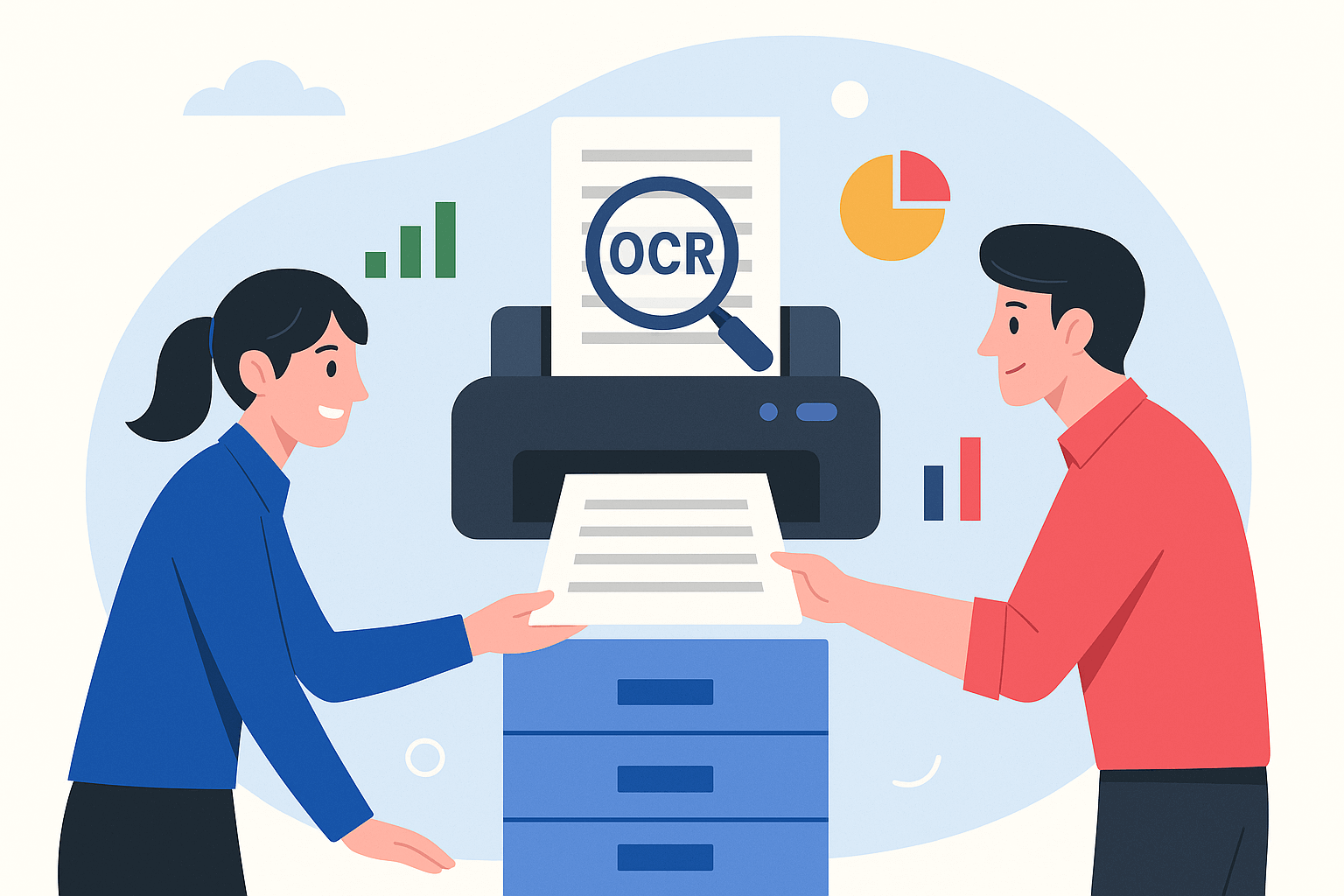Every growing business faces the same challenge: too many documents and not enough time. Business bank statements, financial reports, contracts, and applications arrive in different formats, often as scans or emails.
Underwriters get stuck sorting through files, typing information into systems, and double-checking details. This slows down decisions, increases costs, and creates room for mistakes.
That is where enterprise OCR solutions come in. In this guide, we will look at what enterprise OCR is, how it works, and why it matters for your business.
What Is Optical Character Recognition?
Optical character recognition (OCR) converts printed or handwritten text into digital data. It helps computers read and understand information from scanned documents and images.
Instead of keeping files as static pictures, OCR converts them into searchable text that you can copy, edit, or store in databases. This technology is especially useful for companies that need to process documents in bulk.
Without OCR, staff would have to type out every word through manual data entry, which is slow and often leads to mistakes. By automating this step, OCR saves time and improves accuracy.
OCR can also use machine learning to read different fonts, layouts, and even handwriting. This flexibility makes it suitable for many workflows, from finance and healthcare to logistics and law.
How Does Enterprise OCR Differ from Regular OCR?
Enterprise OCR is an advanced form of optical character recognition designed for organizations that handle large volumes of documents and complex workflows.
While regular OCR can turn scanned images into digital text, enterprise-grade solutions go further. They are built for global enterprises that need reliable accuracy, security, and integration with other systems.
The difference comes down to scale, features, and flexibility.
Regular OCR is suitable for small tasks like converting a single PDF into editable text. In contrast, enterprise solutions focus on processing thousands of files at once, integrating with business software, and handling multiple languages or document types.
They also use custom models to improve accuracy for industry-specific documents, such as invoices or legal papers.
Enterprise OCR also extends OCR capabilities with intelligent character recognition, natural language processing, and automation. The data captured is organized, classified, and ready to be used across workflows and systems.
Here’s a summary of how they differ:
How Is OCR Used With Intelligent Document Processing?
Intelligent document processing (IDP) is software that combines multiple technologies to handle documents automatically. It is designed to work with large volumes of information, from invoices and contracts to emails and reports.
What makes IDP powerful is its ability to manage structured files like forms, semi-structured files like PDFs, and unstructured content such as letters or handwritten notes.
OCR is the foundational technology used within IDP to convert text from physical or digital images into machine-readable text.
Once OCR has created digital text, IDP builds on it with artificial intelligence and machine learning. This helps the system classify documents, split batches, and carry out advanced data extraction.
For example, IDP can recognize a scanned invoice, pull out amounts, dates, and supplier names, and check the extracted data against business rules.
What Documents Can Enterprise OCR Work With?
Enterprise OCR works with many different types of documents across finance and insurance. It can read structured forms, financial records, and even handwritten notes, making it a flexible tool for everyday workflows.
PDFs and Scanned Images
OCR's supported file formats include both native PDFs and scanned image PDFs. For example, a scanned business bank statement or tax return can be converted into digital text that can be searched and stored.
This means loan officers can quickly verify income or transaction history without going through page after page.
Office and Digital Documents
Beyond scanned files, OCR works with digital documents such as Word, Excel, and PowerPoint.
Excel files often contain financial statements that need to be reviewed during underwriting. In insurance, supplemental application docs or a statement of value may come in Word or PDF formats.
OCR makes these files searchable and easier to manage in case management systems.
Financial and Legal Documents
OCR is widely used for financial documents such as invoices, UCC filings, or contracts.
For example, when processing loans, OCR can pull borrower names, amounts, or due dates directly from a set of invoices.
It can capture legal references from UCC filings to confirm compliance requirements. This reduces the need for manual review and improves accuracy in reporting.
Insurance-Specific Forms
Forms are central to underwriting and policy management. OCR can read structured layouts like ACORD forms, ISO applications, and premium audits.
With custom templates, the system can recognize where fields like policy numbers or premium amounts appear.
For example, brokers handling hundreds of ACORD forms can rely on OCR to capture consistent data across different submissions.
Records With Handwriting
Enterprise OCR often includes handwriting recognition. This is important in insurance and lending, where certain forms or inspection reports may still be completed by hand.
Examples include fleet schedules submitted by commercial clients or handwritten notes on supplemental applications.
OCR turns this handwritten text into usable digital data, reducing the need for staff to retype information.
Complex And Multi-Page Documents
Some documents contain mixed layouts, tables, or multiple sections. OCR is designed to handle these as well.
For instance, premium audits or long-form business correspondence may run dozens of pages with tables and narrative sections.
OCR can process document images across the entire file, regardless of file size, and produce structured, searchable outputs. This helps teams work more efficiently with detailed or time-consuming document reviews.
Unstructured Documents
Unstructured documents are those that have free-flowing text or irregular layouts, making them harder to process manually.
Examples include business correspondence, client emails, claims letters, or inspection notes. This might include narrative-style financial statements or cover letters attached to loan applications.
For insurance, it could be policyholder letters, claim descriptions, or customer-submitted reports.
Which Industries Can Benefit from OCR Technology?
Enterprise OCR, combined with IDP and AI, plays an important role in industries that rely on heavy document workflows.
Here is how different industries benefit from OCR technology:
Small Business Finance and Merchant Cash Advance (MCA)
MCA providers depend on quick reviews of printed text from business bank statements and financial records to confirm revenue and cash flow. Manually going through these pages is slow and often leads to mistakes.
With OCR, funders can speed up reviews by extracting text and turning it into structured data. This allows them to make funding decisions faster and more accurately.
A good example of how this works in practice is Heron. Heron helps high-volume MCA funders and brokers scale deal flow without scaling headcount.
The platform automates time-consuming tasks like application intake, business bank statement analysis, and funder decision emails by pushing clean, structured data directly into the CRM within seconds.
It connects to existing systems of record with no costly rebuilds required, giving MCA providers speed, accuracy, and scale without adding staff.
For MCA providers, the biggest gain is in the details. Heron automatically scrubs bank statements, manages submission intake from ISOs, and flags potential fraud.
By removing these manual steps, providers can move faster, reduce human errors, and consistently deliver same-day funding decisions.
Brokers
Brokers act as intermediaries between small businesses and multiple funders. Their job requires collecting applications, preparing submissions, and managing funder decisions.
The challenge is scale. A single broker can receive hundreds of submissions each day, which may generate over a thousand decisions to track and process.
Handling all of this manually means re-entering data, uploading documents into portals, and reviewing every response, which is slow and leaves room for mistakes.
An OCR tool like Heron addresses these challenges by automating the most repetitive parts of the process.
This document automation platform captures data directly from applications and documents, then pushes it into the broker’s workflow in seconds.
It eliminates manual decision processing, automates portal submissions to multiple funders, and provides instant eligibility screening.
With this approach, brokers save hours of manual effort, manage higher submission volumes, and respond to funders and clients faster. The result is more time spent on closing deals and building stronger relationships, rather than getting caught in back-office tasks.
Equipment Finance
Funders in equipment finance handle two very different types of deals. Small-ticket deals often depend on bank statements, while large-ticket deals require detailed financial statements filled with printed text that analysts must carefully review.
Manually retyping this information is slow and not scalable, and it often delays credit decisions.
OCR helps by digitizing text and pulling data directly from these documents. This allows funders to complete ratio calculations, spread financials, and run analyses faster without sacrificing accuracy.
Heron takes this further by automating financial statement spreading, credit analysis workflows, and broker submission intake for small and mixed-ticket equipment deals.
Removing the repetitive steps of typing and reformatting gives credit teams the ability to handle more submissions in less time.
Equipment funders can scale their deal flow, respond to brokers quickly, and focus their efforts on structuring the right financing rather than processing paperwork.
Managing General Agents (MGAs)
Managing general agents are specialized insurance entities that have delegated authority from carriers to underwrite and bind policies on their behalf.
They focus on specific niches such as cyber liability, fleet, or commercial property and play a key role in connecting carriers with retail agents.
Because they manage underwriting and policy binding directly, MGAs need speed and accuracy to stay competitive and maintain profitable carrier relationships.
MGAs receive submissions from retail agents that often include forms, contracts, and handwritten notes. Reviewing these documents manually slows down the underwriting process and increases the chance of mistakes.
OCR helps by recognizing handwritten text and converting all information into a digital format. With digitized text, MGAs can evaluate risk, match submissions to carrier appetites, and prepare policies much faster while reducing human errors.
Heron builds on this by automating insurance submission intake from retail agents, checking policies against carrier appetites, and parsing claims data.
Heron enables MGAs to accelerate binding decisions and respond to agents within hours instead of days. MGAs can then handle larger submission volumes while maintaining accuracy and strong carrier partnerships.
Program Administrators
Program administrators are large-scale insurance entities that manage specialized insurance programs on behalf of carriers or industry associations.
They handle the full lifecycle of a program, from product development to distribution to claims management.
Many serve specific industries or member groups such as trade associations, franchise networks, or affinity groups. Because they oversee multiple insurance lines at once, Program Administrators deal with enterprise-scale volumes and strict carrier reporting requirements.
Their biggest challenge is standardizing processes across different programs and managing thousands of submissions.
Heron enhances this by automating intake of high-volume submissions, organizing policy data across different lines, and supporting carrier reporting.
By handling repetitive document workflows automatically, Heron allows program administrators to standardize processes, cut delays, and focus on managing program performance instead of being slowed down by manual reporting tasks.
Capture Data from Documents Easily with Heron

The biggest challenge MCA funders and insurers face today is their messy, overwhelming inboxes.
Submission documents arrive through email in unstructured formats, and teams spend hours sorting files, rekeying data, and waiting in queues.
Heron is an AI-powered platform that solves this by turning the messy inbox into structured, actionable data automatically.
Heron captures the right data from business bank statements, applications, and forms with higher accuracy than manual entry. The result is faster processing that allows teams to respond in hours instead of days.
Heron connects with your CRM through seamless integration, so clean data flows directly into the system you already use.
Here are the changes you can expect with Heron:
FAQs About Enterprise OCR
What does OCR stand for?
OCR stands for optical character recognition. It’s a technology that can process images and turn printed or handwritten text into digital text, making text extraction possible for use in apps, databases, or tools like Google Sheets.
What is the best OCR right now?
The best OCR engine depends on your needs. Google’s Document AI and ABBYY FineReader are suitable options because they handle complex layouts, offer key features like strong language support, and can adapt to domain-specific documents across industries.
For MCA funders and brokers, Heron is especially valuable since it goes beyond text extraction by automating document intake, parsing, enrichment, and syncing structured data straight into financial CRMs, making it a strong fit for document-heavy work.
What does OCR mean in business?
In business, OCR is a big part of digital transformation because it helps companies reduce manual work and improve accuracy. It’s used to process invoices, contracts, and forms, turning them into searchable files that save time and cut down on errors.
Is Google OCR free?
Yes, Google provides an OCR option through its cloud services with a free tier. It’s part of their Document AI tools, letting users scan files, process images, and work with text inside apps, though heavy use may require a paid plan.


